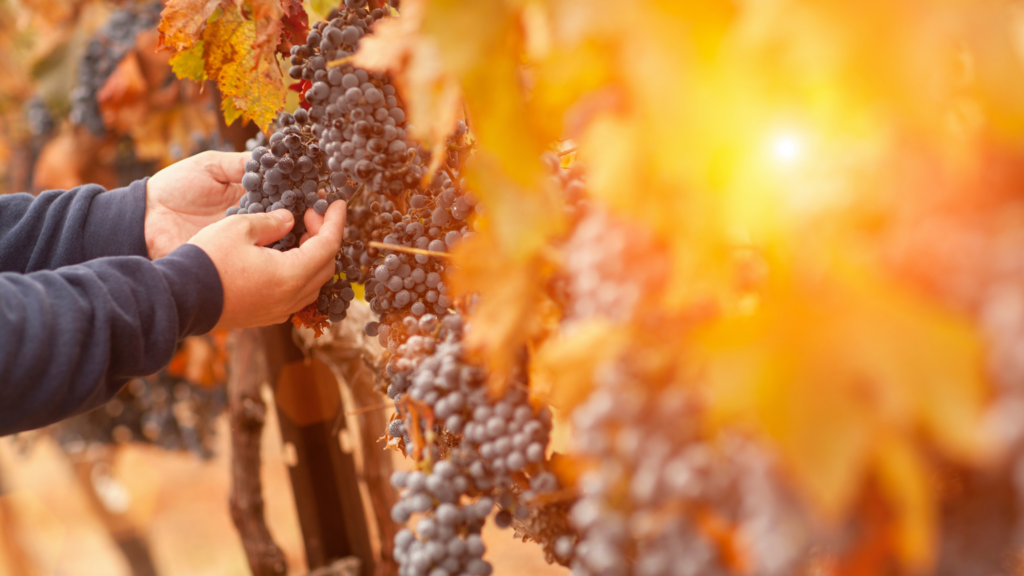Table of Contents
“Discover the Rich History of Alpine Wine: From Ancient Times to the Present!”
The rise of Alpine wine has been a fascinating journey to witness. From its humble beginnings in the small mountain villages of the Alps, Alpine wine has grown to become a major player in the global wine industry. This article will explore the history of Alpine wine, its current status, and the potential for future growth. We will look at the unique terroir of the Alps, the winemaking techniques used to produce Alpine wines, and the challenges and opportunities that come with producing wine in such a unique environment. Finally, we will discuss the potential for Alpine wine to become a major player in the global wine market.
Exploring the History of Alpine Wine: From Ancient Times to the Present

Alpine wine has a long and fascinating history, stretching back to ancient times. From the earliest days of winemaking, the Alpine region has been a major player in the production of some of the world’s finest wines.
In ancient times, the Romans were the first to cultivate grapes in the Alpine region. They planted vineyards in the foothills of the Alps and used the grapes to make wine. This wine was highly prized by the Romans, who used it for religious ceremonies and as a symbol of status.
The Alpine region continued to be an important wine-producing region throughout the Middle Ages. Monks and other religious orders established vineyards in the area and used the grapes to make wine for religious ceremonies. The wines produced in the Alpine region during this time were highly sought after and often used as a form of currency.
In the 16th century, the Alpine region saw a surge in wine production. This was due to the introduction of new grape varieties and improved winemaking techniques. The wines produced during this time were highly sought after and often used as a form of currency.
In the 19th century, the Alpine region saw a decline in wine production due to the phylloxera epidemic. This caused many vineyards to be abandoned and the production of wine in the region to decrease significantly.
However, in the 20th century, the Alpine region saw a resurgence in wine production. New grape varieties were introduced and winemaking techniques improved. This led to the production of some of the world’s finest wines.
Today, the Alpine region is still a major player in the production of some of the world’s finest wines. The region is home to some of the most renowned wineries in the world, producing wines that are highly sought after by wine connoisseurs.
The history of Alpine wine is a long and fascinating one. From the earliest days of winemaking to the present, the Alpine region has been a major player in the production of some of the world’s finest wines. Whether you’re a wine enthusiast or just curious about the history of wine, exploring the history of Alpine wine is sure to be an interesting and rewarding experience.
The Impact of Climate Change on Alpine Wine Production
Climate change is having a major impact on alpine wine production. Warmer temperatures, more extreme weather events, and changes in precipitation patterns are all having a negative effect on the quality and quantity of alpine wines.
The alpine region is known for its cool climate, which is ideal for producing high-quality wines. However, as temperatures rise, the grapes are ripening earlier and faster, resulting in lower quality wines. Warmer temperatures also increase the risk of disease and pests, which can further reduce the quality of the grapes.
Extreme weather events, such as hail and heavy rain, can also damage the grapes and reduce the quality of the wine. In addition, changes in precipitation patterns can lead to drought, which can reduce the amount of water available for irrigation and further reduce the quality of the grapes.
Finally, rising temperatures can also lead to an increase in the amount of evaporation from the soil, which can reduce the amount of nutrients available to the vines. This can further reduce the quality of the grapes and the resulting wine.
Overall, climate change is having a major impact on alpine wine production. Warmer temperatures, more extreme weather events, and changes in precipitation patterns are all having a negative effect on the quality and quantity of alpine wines. As a result, winemakers in the alpine region must adapt their production methods in order to continue producing high-quality wines.
Exploring the Unique Terroir of Alpine Wine Regions
If you’re a wine lover, you’ve probably heard of the unique terroir of Alpine wine regions. But what exactly is it? Terroir is a French term that refers to the unique combination of environmental factors that give a wine its distinctive character. In Alpine wine regions, the terroir is particularly special because of the unique combination of climate, soil, and elevation.
The climate of Alpine wine regions is characterized by cold winters and hot summers. This creates a unique environment for grape growing, as the cold winters help to protect the vines from disease and the hot summers allow the grapes to ripen. The soil in these regions is also unique, as it is typically composed of limestone and clay, which helps to retain moisture and provide nutrients to the vines.
The elevation of Alpine wine regions is also a major factor in the terroir. The higher elevation helps to protect the vines from extreme temperatures and also helps to create a unique microclimate. This microclimate helps to create a unique flavor profile in the wines, as the grapes are exposed to more sunlight and cooler temperatures.
The combination of these environmental factors creates a unique terroir in Alpine wine regions that is unlike any other. The wines produced in these regions are typically characterized by bright acidity, intense aromas, and a mineral-driven finish. These wines are perfect for pairing with food, as their bright acidity helps to cut through the richness of dishes.
If you’re looking for a unique and interesting wine experience, then exploring the terroir of Alpine wine regions is a great way to do it. The combination of climate, soil, and elevation creates a unique flavor profile that is unlike any other. So, if you’re looking for something special, then be sure to check out the wines from Alpine wine regions!
The Benefits of Sustainable Winemaking Practices in Alpine Wine Regions
Sustainable winemaking practices are becoming increasingly popular in alpine wine regions, and for good reason. Not only do these practices help protect the environment, but they also offer a number of benefits to winemakers and consumers alike. Here are just a few of the advantages of sustainable winemaking in alpine wine regions.
First, sustainable winemaking practices help to preserve the unique characteristics of the region’s terroir. By using natural methods to manage pests and weeds, winemakers can ensure that the soil and climate of the region remain intact. This helps to ensure that the wines produced in the region retain their distinct flavor and aroma.
Second, sustainable winemaking practices help to reduce the environmental impact of winemaking. By using natural methods to manage pests and weeds, winemakers can reduce the amount of chemicals used in the winemaking process. This helps to protect the environment from the harmful effects of chemical runoff.
Third, sustainable winemaking practices help to improve the quality of the wines produced in the region. By using natural methods to manage pests and weeds, winemakers can ensure that the grapes used in the winemaking process are of the highest quality. This helps to ensure that the wines produced in the region are of the highest quality.
Finally, sustainable winemaking practices help to promote the local economy. By using natural methods to manage pests and weeds, winemakers can reduce the amount of money spent on chemical inputs. This helps to keep money in the local economy, which can help to create jobs and stimulate economic growth.
Overall, sustainable winemaking practices offer a number of benefits to winemakers and consumers alike. Not only do these practices help to protect the environment, but they also help to preserve the unique characteristics of the region’s terroir, reduce the environmental impact of winemaking, improve the quality of the wines produced in the region, and promote the local economy. For these reasons, sustainable winemaking practices are becoming increasingly popular in alpine wine regions.
Q&A
1. What is the history of Alpine wine?
Alpine wine has a long and varied history, stretching back to the Roman Empire. In the Middle Ages, Alpine wine was produced in the mountain valleys of the Alps, and was highly prized for its quality and flavor. In the 19th century, the development of modern winemaking techniques and the introduction of new grape varieties allowed Alpine winemakers to produce wines of even higher quality. Today, Alpine wines are renowned for their unique character and complexity, and are produced in many countries throughout the Alps.
2. What are some of the unique characteristics of Alpine wines?
Alpine wines are typically characterized by their intense aromas and flavors, which are often described as floral, herbal, and spicy. They tend to be light-bodied and high in acidity, with a crisp, mineral-driven finish. Many Alpine wines also have a distinct minerality, which is attributed to the unique terroir of the region.
3. What are some of the most popular Alpine wine regions?
Some of the most popular Alpine wine regions include France’s Savoie and Jura regions, Switzerland’s Valais and Graubünden regions, and Italy’s Alto Adige and Trentino-Alto Adige regions.
4. What types of grapes are used to make Alpine wines?
The most commonly used grapes for Alpine wines include Pinot Noir, Chardonnay, Sauvignon Blanc, Riesling, Gewürztraminer, and Müller-Thurgau. Other varieties, such as Pinot Gris, Pinot Blanc, and Gamay, are also used in some regions.In conclusion, the rise of Alpine wine has been an exciting journey to explore. From its humble beginnings in the small mountain villages of the Alps, Alpine wine has grown to become a major player in the global wine industry. With its unique terroir and production methods, Alpine wine has become a favorite among wine enthusiasts around the world. As the popularity of Alpine wine continues to grow, so too will the opportunities for winemakers to explore and create new and exciting wines.
![]()










